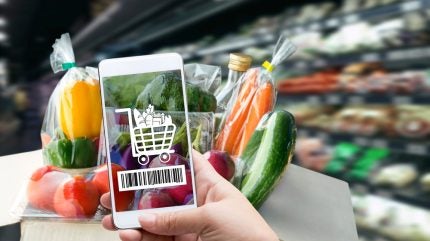
From biodegradable films to smart labelling systems, food packaging innovations are transforming the way we protect, store, and transport what we eat.
These advancements address critical global concerns—reducing plastic waste, extending shelf life, and improving food safety—while keeping pace with modern consumer expectations.

Discover B2B Marketing That Performs
Combine business intelligence and editorial excellence to reach engaged professionals across 36 leading media platforms.
As environmental awareness grows and supply chains become increasingly complex, brands and researchers are exploring sustainable materials, intelligent packaging, and waste-reducing design.
These changes reflect not just a shift in technology but a broader cultural and environmental awakening around how packaging impacts the planet and our health.
Sustainable materials changing the game
Traditional plastic packaging, though cheap and effective, poses serious environmental risks due to its non-biodegradable nature. This has spurred a wave of research into sustainable food packaging materials that offer the same performance with a fraction of the environmental footprint.
Bioplastics—made from renewable resources such as corn starch, sugarcane, or algae—are rapidly gaining traction. Polylactic acid (PLA), one of the most widely used bioplastics, is compostable and suitable for both rigid and flexible packaging.

US Tariffs are shifting - will you react or anticipate?
Don’t let policy changes catch you off guard. Stay proactive with real-time data and expert analysis.
By GlobalDataWhile PLA requires industrial composting facilities to break down fully, it represents a significant step away from petrochemical-based plastics.
Another innovation making headlines is edible packaging. Developed using materials like seaweed, rice starch, or milk protein (casein), this type of packaging is not only biodegradable but also safe to consume.
Companies such as Notpla and Evoware are at the forefront, offering seaweed-based films for items like sauces and dry snacks.
Plant fibre-based alternatives—such as mushroom mycelium, bamboo, or sugarcane bagasse—are also gaining popularity. These materials are often moulded into trays, cups, and wraps, providing compostable options for ready meals and takeaway items.
Incorporating recycled content is another route towards eco-conscious packaging. Post-consumer recycled (PCR) plastics, when safely treated and certified for food contact, help divert plastic from landfills and reduce the need for virgin materials.
Smart packaging: improving safety and transparency
Smart or intelligent packaging is revolutionising food safety and supply chain transparency. These innovations involve embedded technologies that monitor, track, or communicate information about a product’s condition.
One key area of development is time-temperature indicators (TTIs). These are small sensors or labels that change colour based on the temperature history of a product.
They offer a visual cue to consumers and retailers about whether the cold chain was properly maintained—crucial for perishable items like dairy, meat, and seafood.
Gas sensors and freshness indicators take this a step further by detecting spoilage gases such as ammonia or hydrogen sulphide. When integrated into packaging, these tools can help reduce food waste by more accurately indicating freshness compared to standard “use by” dates.
QR codes and RFID tags are becoming more common, especially for traceability. By scanning a code, consumers can access detailed information about the product’s origin, handling, and nutritional content. This not only builds trust but also aids in recalls and improves supply chain efficiency.
Some advanced systems even interact with smartphone apps, allowing users to track a product’s journey from farm to table. Such transparency aligns with growing consumer interest in ethical sourcing and food safety, especially in the wake of global supply chain disruptions.
Designing for waste reduction and circularity
Beyond materials and sensors, how packaging is designed plays a major role in sustainability. Food packaging innovation now includes approaches that minimise waste throughout the product lifecycle, from production to disposal.
One trend is minimal packaging—using less material without compromising product protection. This is often achieved through improved barrier technologies, which allow thinner films while maintaining freshness and hygiene.
Mono-material packaging, made from a single type of plastic, is another game-changer. Unlike multi-layer laminates, which are hard to recycle due to mixed materials, mono-materials can be more easily processed at recycling facilities.
Polyethylene (PE) and polypropylene (PP) are common candidates for this approach, especially in flexible packaging formats like pouches and sachets.
Reusability is also entering the mainstream. Brands are experimenting with refillable containers and closed-loop packaging systems, where consumers return or refill packaging to reduce single-use waste.
This model, once common in milk deliveries, is being adapted to modern retail through partnerships between brands and zero-waste stores.
Innovative structural designs—such as collapsible pouches, resealable packs, and portion-controlled containers—further contribute to waste reduction. These designs not only improve convenience but also help prevent overconsumption and spoilage.
Looking ahead
The evolution of food packaging is a compelling example of how innovation can address multiple global challenges at once. Sustainable packaging materials, intelligent monitoring systems, and waste-reducing designs are reshaping the food industry in ways that benefit both people and the planet.
While challenges remain—such as scaling up production of novel materials and ensuring affordability—ongoing research and growing consumer demand suggest that the momentum will continue.
As governments implement stricter regulations on single-use plastics and carbon emissions, the shift toward more responsible packaging solutions will become not just desirable, but essential.
In the years to come, the most successful food packaging will not only preserve taste and freshness but also reflect values of transparency, sustainability, and circularity.
With innovation at the core, the humble food package is poised to become a key player in building a healthier, more sustainable future.





